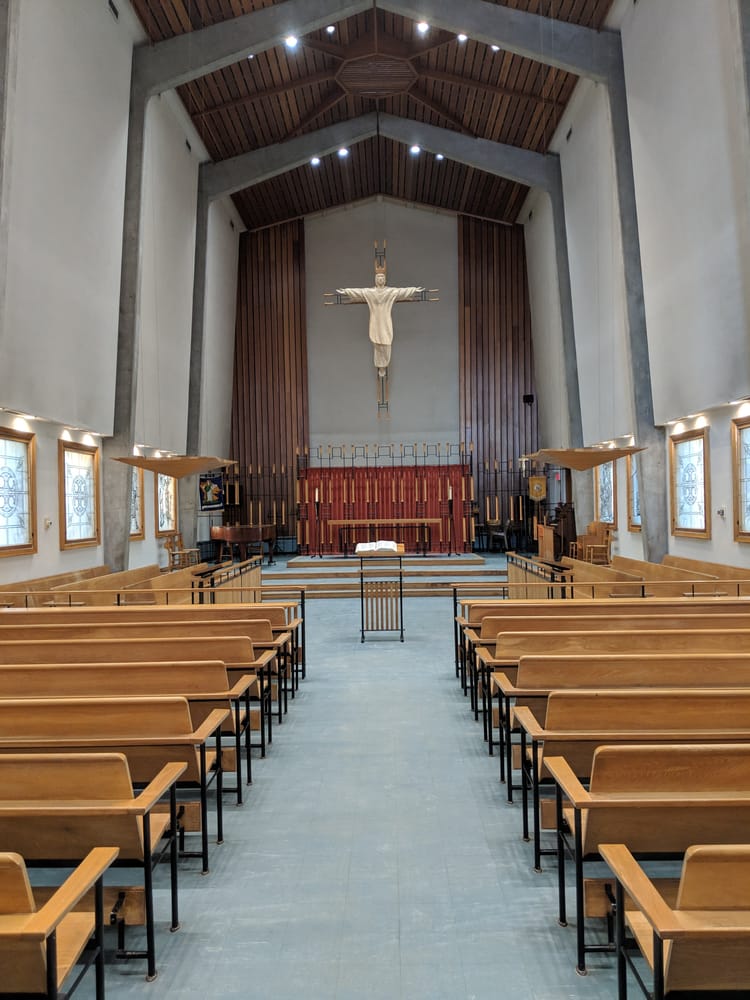Lives of Ceaseless Praise

Introduction
It doesn’t take long in the Anglican tradition before one hears or reads some version of the teaching, “The way we pray shapes the way we believe.” From the very early days of our faith, Christians have maintained the idea that prayer, reading the Bible, and returning to God throughout the day are good and important practices. These practices have taken different shapes over history, changing as seemed to best in various times and places, but the foundational desire for lives shaped by prayer has remained the same.
Some of this may be the spiritual version of eating our vegetables. Prayer, scripture study, and setting aside time to focus on God alone are good for us, so we ought to do them. Even, perhaps especially, when we don’t love them. Or when we feel like we haven’t enough time for them. But, just like the development of any other beneficial habit, when we’re consistent with our prayer practices, we see the benefits. We can feel ourselves being shaped by them over time, with prayer changing the way we see ourselves and our neighbours, and the continuous relationship with scripture becoming part of how we move and speak in the world.
To help build a habit of praying consistently, the Anglican tradition has historically offered a fourfold pattern of prayer each day. Two times of prayer, at midday and at night before going to sleep, that are brief and simple, with very little that changes from day to day or season to season. These are staggered with two other times of prayer, in the morning and in the evening, that are longer and a little more complicated. These times of prayer often include canticles (songs from the Bible), prayers, and other aspects that change with the days of the week or the seasons.
In addition to building a daily habit of prayer, regularly reading scripture, praying through the psalms, and keeping our hearts and minds focused on God, these times of prayer are also meant to help us reflect on our whole lives. If we imagine a single day as representing a whole human life, we can see how these times of prayer align with important stages of life: Morning Prayer and the gift of new life; Midday Prayer and the energy of midlife; Evening Prayer and the wisdom of age; finally, Night Prayer and preparing for our death. With this relationship in mind as we pray, we not only shape our current day and practices, but prepare ourselves for the next stage of life, reflect on our past, and always seek to align our living with the will of God.
Lastly, it is important to note that these patterns of prayer developed in cultures that were primarily agrarian and before the incredibly technologies of the last 200 years. Following the times of day and the natural seasons made great sense because it was how most lives were structured. As this rhythm of prayer was taking shape, 24-hour factories with staggered shifts and indoor lighting at the flip of a switch were not even glimmers in the collective imagination. Some of the associations with certain prayers at times of day may make less immediate sense to us now. Even so, there is value in learning and contemplating them as a connection to this centuries-old pattern that has sustained and formed our ancestors in the faith for so long.
Morning Prayer and New Birth
Each day begins with prayers of thanksgiving to God. Thanks for our safe arrival at the beginning of a new day, prayerful acknowledgement of the glory of God who makes all things possible, from the beauty of the rising sun to the details of our own lives; hopes for the day before us. Just as childbirth is risky, we offer thanks and recognize that every day we are given to live is a gift.
Traditionally, Morning Prayer holds the largest portion of Bible reading in these times of prayer. There are usually two or more psalms and two other passages of scripture to be read. These are paired with canticles, so by the time Morning Prayer is finished, we have heard a handful of psalms and four or more portions of the Bible. The readings assigned to Morning Prayer are also often the longest of the day. Just as children at the beginning of life need plenty of care and instruction in how to survive and thrive in this world, we begin each day with an abundance of God’s Word, filling us with inspiration, teaching, and wisdom to carry us through the day ahead.
The traditional readings and prayers at Morning Prayer also tend to focus on the hopes for the day ahead, the anticipated needs, and many reminders of the glory of God made known throughout creation. These are paired with prophetic canticles like The Song of Zechariah, looking forward to what will be accomplished for God’s people.
Midday Prayer and the Energy of Midlife
The middle of the day is similar to the middle of our lives. We are still being formed, still learning, still growing. There is much that yet lies ahead of us, but we are also full of energy and capability. Part of the plan has been revealed to us and we are in the middle of pursuing it with all of our heart, mind, soul, and strength.
It is also the time of day when the sun shines at its brightest and hottest. We can easily wear ourselves out if we try to do too much. And so, there is a time of rest appointed where we can stop working, pray, reflect, plan ahead, and reconnect with God and our community before taking up the rest of the day’s work.
The Bible readings appointed for Midday Prayer are usually very short, sometimes just one or two verses. They are also often the same readings every day, paired with a few short prayers about gratitude for the time of rest and refreshment, the work that has been accomplished, and the needs of the afternoon. This time of prayer is intentionally short and repetitive, allowing it to be easily memorized. This means Midday Prayer can be said without a prayerbook or Bible at a desk, in a field, or anywhere else that a quiet few minutes can be found.
Evening Prayer and the Wisdom of Age
The timing of Evening Prayer is a bit complicated for Canadians. It is traditionally said around sundown and often opens with prayers of thanksgiving for God’s gift of light as the household candles are lit or, in 2025, the lights are turned on. Of course, in our Canadian summer months, sundown can be a long time in coming, so Evening Prayer is often said in the late afternoon or early evening, regardless of where the sun is in the sky.
Evening Prayer includes prayers of thanksgiving for the blessings of the day past, for a time of evening rest before sleep, and offers time to reflect on what has been learned. What was of God today? What was not of God? What were the day’s blessings? Like Morning Prayer, there are usually a handful of psalms to read and at least one passage from the Bible, along with a canticle. Depending on the version of Evening Prayer, there may be more readings and canticles. This time of prayer may also include changing elements that reflect aspects of the week or season.
The traditional canticle for Evening Prayer is Mary’s Song. In the same way that Morning Prayer’s canticles focus on prophecy for what will be done, Mary’s Song is full of statements about what God has done, looking back on events past and reflecting on their consequences. With this reflective attitude, drawing wisdom out of the experiences of the day, Evening Prayer aligns with age beyond midlife. A time of less strenuous physical activity, but no shortage of thoughtful prayer and learning to share.
Night Prayer and Preparing to Die
Finally, just before turning in to sleep for the night, there is Night Prayer. This time of prayer is still often referred to by its Latin name, Compline. Like Midday Prayer, this time of prayer is shorter and stays the same throughout the days and seasons. It, too, can be memorized and said no matter where one lays one’s head that evening. (In my experience, Night Prayer is often said lying in bed, before drifting off to sleep.)
Night prayer focuses on petitions for safety through the night and acknowledges that tomorrow is not guaranteed. Many of the prayers about the end of day and a time of sleep are similar to the prayers we hear at funerals and this is no accident. Having come to the end of the day, and the end of life in that cycle of a day as a whole human life, we rehearse the steps of our own funerals before we sleep. Even the familiar, single-prayer version of Night Prayer taught to many children since the 1700s, “Now I lay me down to sleep, I pray the Lord my Soul to keep; If I should die before I 'wake, I pray the Lord my Soul to take,” contains a reminder that each night might be our last. And, if it is to be so, we pray for a good death.
The language we use around the end of the day and sleep are similar to those we use when talking about death. Falling darkness and the onset of night are often euphemisms for the end of life. Eyes close, breathing slows down, the world seems to drift away as the sleeper travels elsewhere, whether in dreams or away from this life entirely.
This is, perhaps, the most difficult daily time of prayer to reconcile with our contemporary culture. We are reminded, each night, that we will, someday, die. That we should be prepared for this and that we should pray, not to avoid death, but that, when it comes, it is a good death. We Christians do not fear death because its power has been stripped away and we share in the eternal life of Christ’s resurrection. We live in the sure and certain hope that death is not the end, but a passage to the next life, just as each night is not the end of time, but a passage to the next day.
Conclusion
A pattern of regular times of prayer throughout the day can feel like an interruption in a world that demands we constantly be producing. Prayer does not create anything that can be sold or traded. As Christians, we know that our true worth is not in what we produce, but in who we are: beloved people made in the image and likeness of God.
A pattern of daily prayer calls us to put down whatever is occupying us and return to the Bible, prayer, and place our focus on God. This is not accidental. As holy scripture reminds us, we are to “Rejoice always, pray without ceasing, give thanks in all circumstances; for this is the will of God in Christ Jesus for you. Do not quench the Spirit.” (1 Thessalonians 5:16-19) Prayer, thanksgiving, and attendance to the Spirit’s moving in our lives is meant to be our first priority.
It is the work of our mortal lives that is the interruption to our prayer, not the other way round. The practice of regularly returning to God in prayer reminds us that we were made for more than the grind, or the hustle. Daily prayer shapes us, not only day by day, but over our entire lives. We begin to show in our words and actions the fruit of years spent with holy scripture, of listening to God in prayer, and reflecting with intention on our lives. The way we pray can shape not only the way we believe, but the ways in which we live and move and have our being in this world.
This article was originally published in Rupert's Land News, June 2025.





